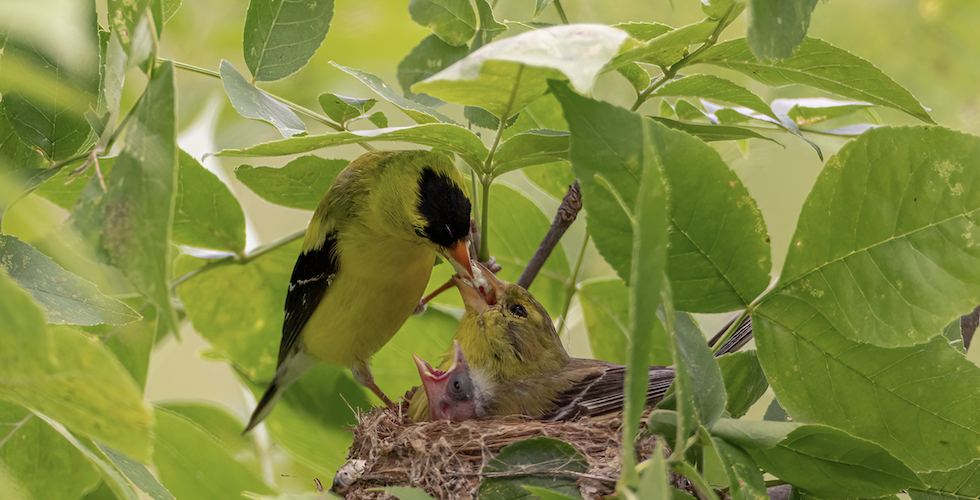
The American Goldfinch: A Great Example of Alternate Nesting Behavior
Wildlife photographer and naturalist Stan Tekiela tells us about the American goldfinch, a great example of a bird who practices alternate nesting behavior. Find out why the bird doesn’t join other native birds in nesting in the spring.
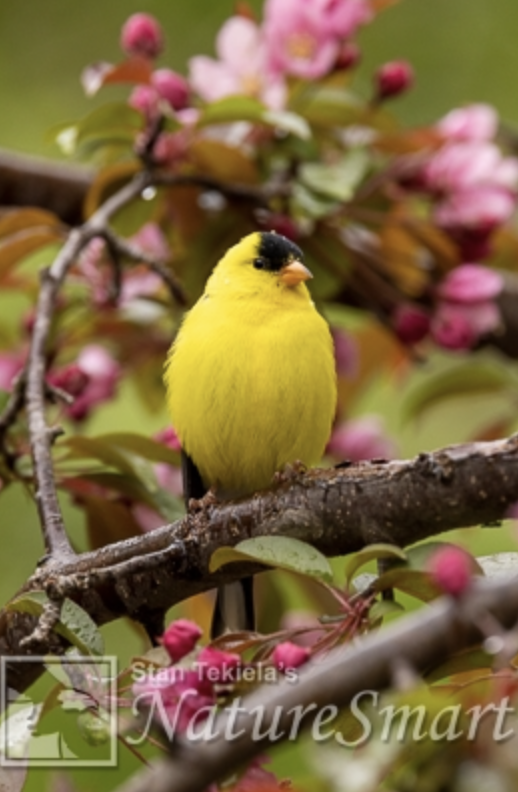
The vast majority of native bird nesting takes place in spring, right after the trees green up and the flowers start to bloom. The spring nesting season feels like a frantic rush to quickly build a nest, lay and incubate eggs, and feed the resulting chicks. Each species of bird approaches nesting slightly differently but ultimately with the same end goal: to successfully pass on their genes.
However, there are some species who don’t follow the early nesting playbook for reproduction. The American goldfinch (Spinus tristis) is a great example of this alternate nesting behavior. Weeks after most young birds have left the nest and the adults are chasing after the young to feed them, the American goldfinch is just starting to work on building a nest and laying eggs.
I was fortunate enough to recently find an American goldfinch nest in a location where I could respectfully observe and capture a few images without disturbing their natural nesting behavior. Located along a driveway and down a small hill, the nest was slightly below eye-level when I parked my truck. This allowed me to stay inside my vehicle and use a very long lens to watch, learn, and capture natural nesting behaviors.
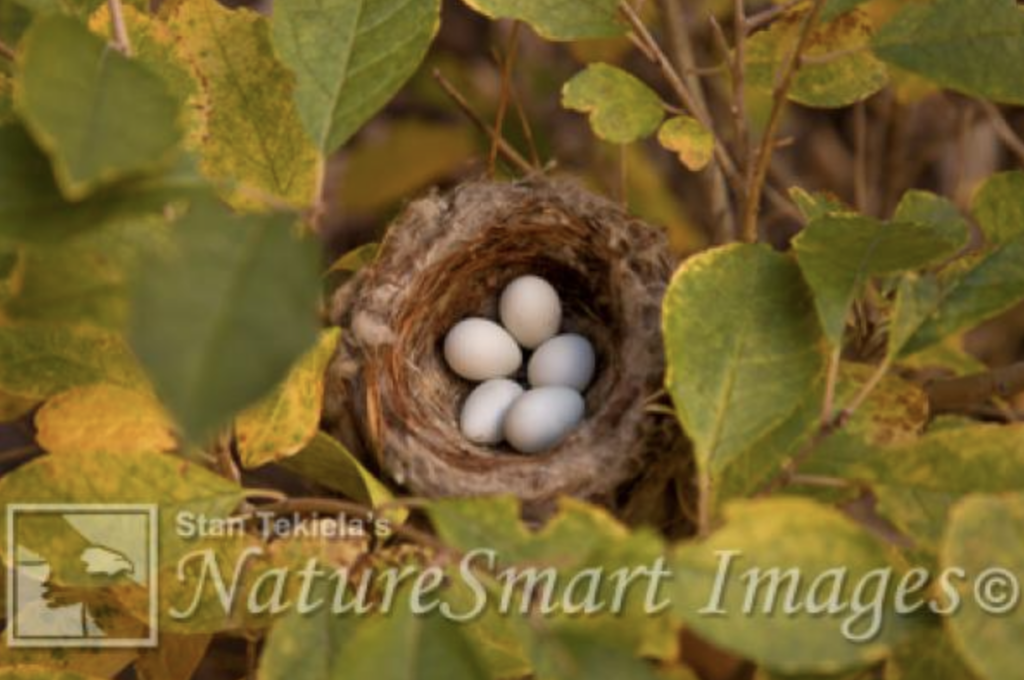
It is not known why the American goldfinch nests so late in the season. It may be related to the ripening of thistle seed, which makes up a large portion of their diet. The extra food makes feeding themselves and their offspring much easier and perhaps leads to more babies leaving the nest. In addition to the abundant food, they use the soft, silky material attached to the thistle seed to line the inner cups of their nests. They also use silky material from milkweed and cattails. Again, an abundant nesting material makes it easier to construct the nest.
The male goldfinch sets up a territory and begins to make elaborate courtship flights while singing a loud, clear song. His flight is often described as a roller-coaster ride because his flight goes up and down in an undulating pattern. Closer to the ground, he often flies in a zigzag pattern from tree to tree to attract a female.
It is the female who constructs the nest, often on the thin branches of a small tree or shrub. It takes her less than a week to fully construct the nest. Some males will bring construction material to the female, but she does all the work. She will lay four to six eggs over the next week before she sits down and starts to incubate them.
Chicks hatch 12 to 14 days after incubation starts. The young are hatched naked, with their eyes still sealed shut, and are completely helpless. The adult male collects food and brings it to the female, who in turn feeds the newly hatched young. One of the things that makes goldfinches unusual is that they feed their young mostly seeds and very few insects. Most springtime baby birds are fed a high-protein diet of insects.
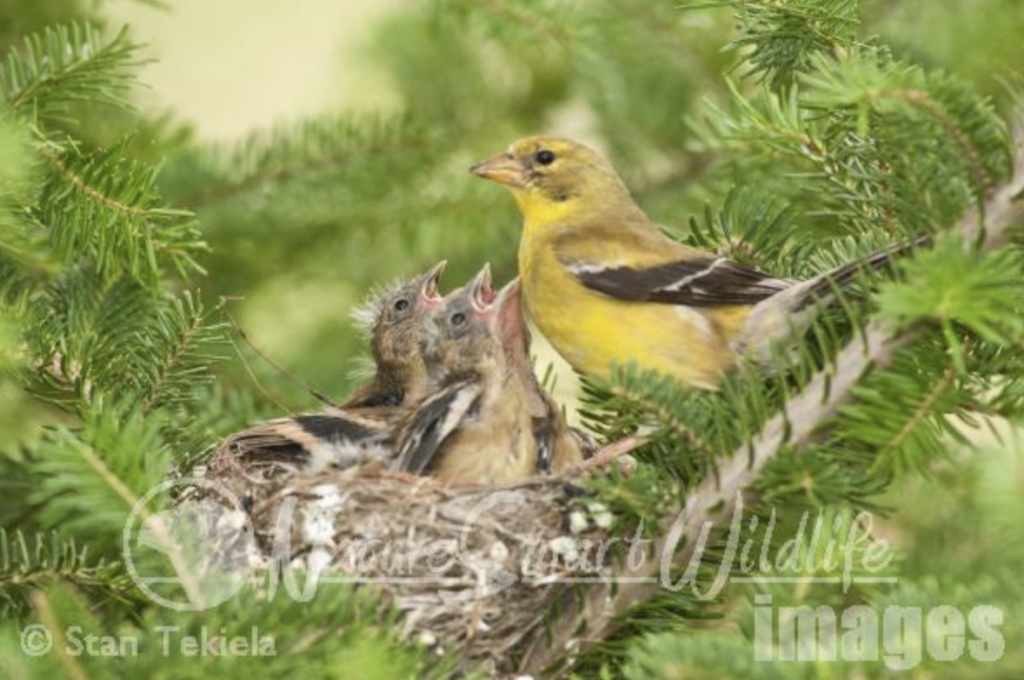
There is very little nest parasitism by brown-headed cowbirds because the goldfinch nests are most likely built too late in the year for the cowbirds, and the survival rate of the cowbird offspring is very low in the goldfinch nest because of the mostly seed diet.
American goldfinches are considered granivorous because they only occasionally eat insects. They concentrate their food-gathering efforts on a narrow variety of weedy plants, such as thistle, dandelion, ragweed, and other less desirable plants. They also consume fresh tree buds, along with a wide variety of ripened fruit. Watching the American goldfinch feeding at this time of year is fun. It often hangs upside down from seedheads while popping seed after seed out and consuming them right on the spot.
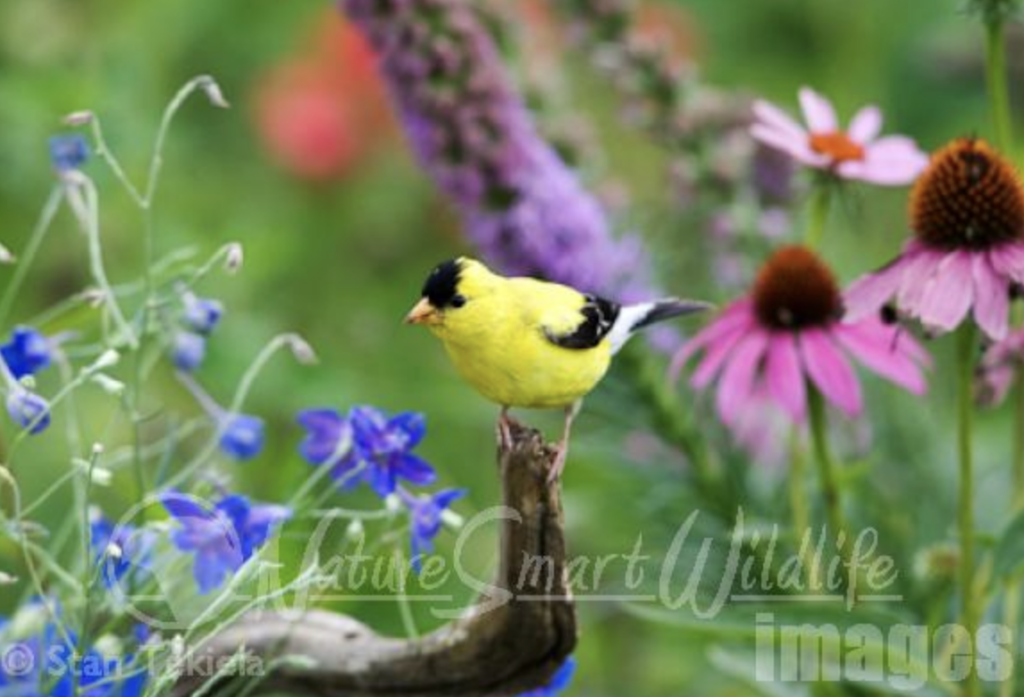
Sitting in my truck with my lens poked through the driver-side window, I see the male flying to the nest where the female sits on the newly hatched young. He is singing his loud, clear song as he approaches, and the female immediately starts to quiver her wings and open her mouth even before he arrives at the edge of the nest. When he does, the male feeds the female a regurgitated slurry of seeds. He departs and she feeds the young baby birds with the freshly delivered food. This is an amazing and very different strategy in bird reproduction.
If you enjoyed Stan’s post, you may like one of his amazing nature books: Wild Birds, Backyard Birds: Welcomed Guests at our Gardens and Feeders, and Bald Eagles: The Ultimate Raptors.
You can follow Stan on Facebook and Twitter, or contact him via his web page. Stan’s nationally syndicated NatureSmart Column appears in more than 25 cities spanning 5 states (Minnesota, Wisconsin, Michigan, Illinois, and Pennsylvania) and is circulated to more than 750,000 readers.
For more stories about wildlife and nature, sign up for our newsletter now! #bewellbeoutdoors


